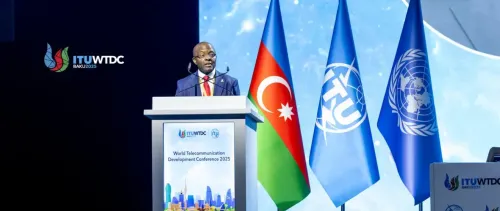
Header image credit: Adobe Stock/AI generated
Since the inception of the “radio” era, linkages were apparent between the radio industry and sustainability.
But the initial focus was purely on economic sustainability. During tests for the first transoceanic transmission conducted by Guglielmo Marconi in 1901, a key concern was the amount of coal needed to fuel the electricity plant powering the radio station. At that time, comparisons were made between the cost of laying a cable under the Atlantic and the cost of sending a telegram via the new wireless system.
Nowadays, while the economic aspect of sustainability remains important, the conversation now includes environmental sustainability. Efficient energy use is key to reduce carbon dioxide emissions in response to climate change. Furthermore, radio broadcasters are increasingly opting to use energy from renewable sources, such as solar power.
20th Century Box
Over radio’s first century of evolution as a broadcast medium, numerous innovations served to improve the efficiency of transmissions. Although mainly driven by economic reasons, those technologies now also support environmentally friendly and ethical use of the medium.
Examples include:
- Antenna design – with advances in radiation systems allowing radio energy to be directed only where needed, vastly reducing the amount of transmitter power required for good reception.
- Transmitter efficiency – continuous improvements are reducing electricity needs and operating costs, with advanced AM modulation techniques such as Pulse Step Modulation (PSM), Dynamic Carrier Control (DCC), and Dynamic Amplitude Modulation (DAM) further lowering power consumption.
New challenges in the digital era
In recent years, the introduction of digital broadcasts has presented new challenges. But established radio tech often serves new purposes, too.
For instance, one of the most widely adopted ways to improve efficiency in today’s digital audio broadcast (DAB) transmissions is the Doherty power amplifier – patented back in in 1940 to make AM transmitters more efficient.
The Doherty technology works best with radio amplifiers handling signals with high crest factor, making it especially suitable for digital signals. In fact, it is now part of most digital systems handling OFDM (Orthogonal Frequency-Division Multiplexing) signals.
Digital technologies, meanwhile, can greatly improve the efficiency of radio spectrum usage, helping to conserve another limited natural resource. Unlike traditional analogue systems, a single digital multiplexer can carry multiple programmes all at once.
The ITU Radiocommunication Sector (ITU-R – one of three sectors of the International Telecommunication Union) works with governments and regulators, as well as the private sector and other organizations, to optimize spectrum management globally.
ITU-R Study Group 6 – dedicated to broadcasting services – has conducted extensive work to analyse and improve radio efficiency. One publication in particular, “Reducing the environmental impact of terrestrial broadcasting systems,” considers sustainability in modern climate-mitigation terms, highlighting various strategies and practices broadcasters can use to reduce their carbon footprint.
Boosting disaster readiness
Beyond energy efficiency, radio plays a critical role in disaster preparedness and response. As extreme weather events such as floods, heatwaves, and hurricanes become more frequent due to climate change, radio serves as a lifeline, providing real-time updates and life-saving instructions.
Radio can also keep populations informed on “what to do in case of” a disaster situation. Many radio stations operate as public services, often under a national or state-owned media company, with a mandate to warn the public and, when needed, support disaster relief.
Radio networks, designed for resilience, remain one of the most affordable ways to keep people informed in emergencies. Whether AM, FM or digital-based, the system is simple, agile, cost-effective and accessible to everyone.
Raising climate awareness
AM and FM radio remain the most widespread communication systems in the world. Often, in the unfortunate event of a calamity, radio remains the first medium to provide vital information. It also remains the medium people are most inclined to trust for reliable and affordable information.
Outside of disaster scenarios, educational radio programming helps inform people about climate friendly practices and choices.
Thus, in fight against climate change, radio broadcasting matters both from the technical perspective of sustainable broadcasting and from the socio-political standpoint, providing trusted information, enhancing disaster response, and fostering important public awareness.
Long live radio!
World Radio Day, celebrated every 13 February, highlights the technology’s critical role in providing widescale public access to essential information. This year’s theme, Radio and Climate Change, underlines how the familiar broadcast medium can raise awareness, disseminate alerts, drive action, and help build environmental and socio-economic resilience globally.


